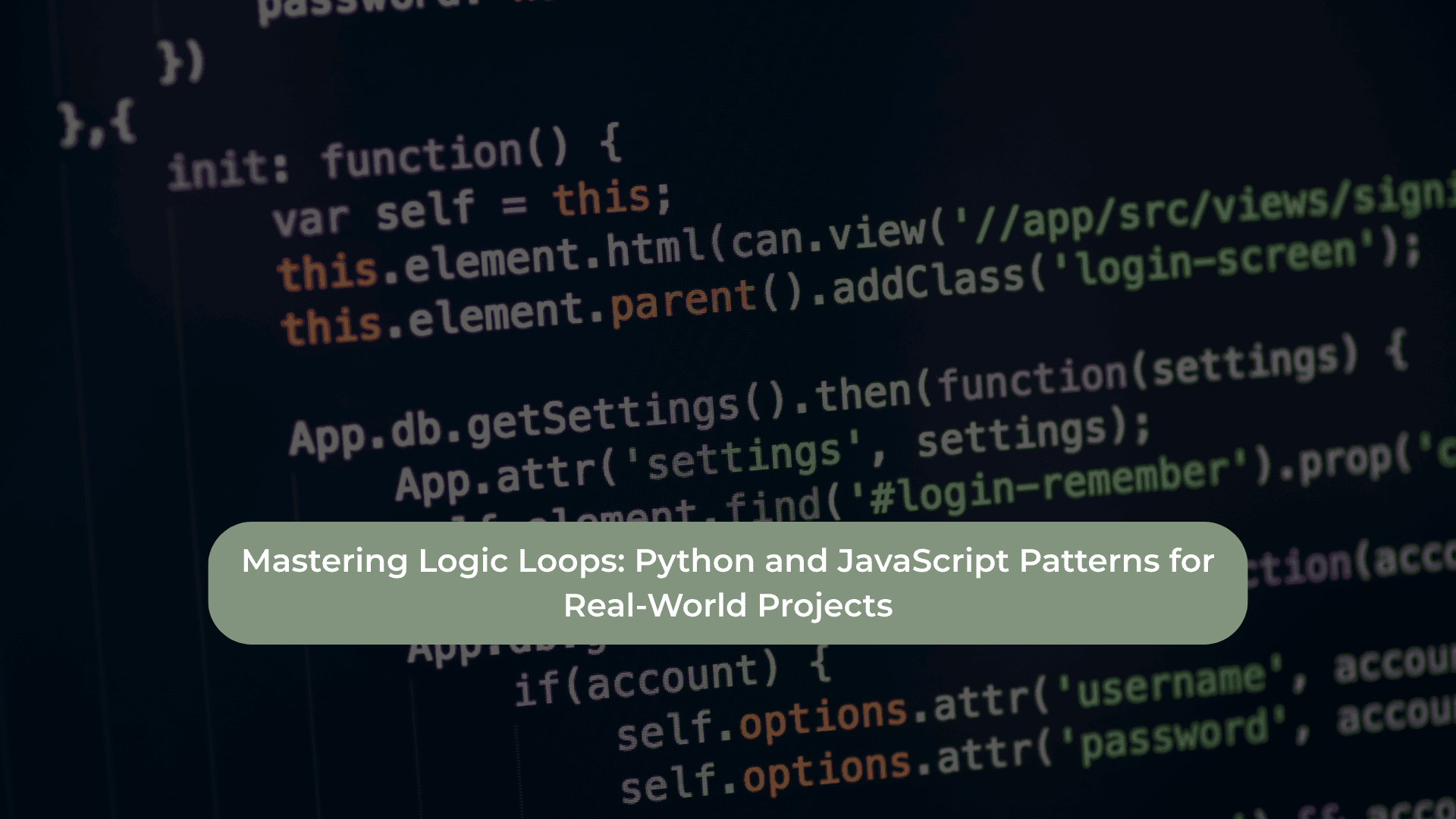Loops are the backbone of programming, especially when you need to repeat tasks efficiently in real-world projects. Whether you’re building a website, a machine learning model, or an automation script, mastering the right looping patterns in Python and JavaScript can level up your code. Let’s explore the common patterns and how to use them for maximum impact.
1. For Loops – The Classic Iteration Tool
The for loop is one of the most common and simple looping constructs. It’s perfect when you know how many times you must repeat a task.
Python Example:

This loops over the numbers from 0 to 4, printing each iteration.
JavaScript Example:

Use Case:
- Python: Iterating through a list of data.
- JavaScript: Traversing DOM elements in a webpage.
2. While Loops – Keep Going While a Condition is True
Use a while loop when you don’t know how many times it will need to run, but you have a condition that keeps it going.
Python Example:

JavaScript Example:

Use Case:
- Python: Continually checks if a server is running before executing tasks.
- JavaScript: Listening for user input until an action is triggered.
3. For Each – Perfect for Collections
For-each loops are highly readable and concise when working with collections like lists, arrays, or objects.
Python Example:

JavaScript Example:

Use Case:
- Python: Iterating over file paths in a directory.
- JavaScript: Looping through user data for rendering content.
4. Nested Loops – Looping Within Loops
Sometimes, you’ll need loops within loops, especially when working with multidimensional data, like arrays of arrays.
Python Example:

JavaScript Example:

Use Case:
- Python: Processing a 2D grid or matrix in scientific computing.
- JavaScript: Looping through a grid of items on a webpage for layout adjustments.
5. Break and Continue – Managing Loop Flow
Both break and continue give you fine control over your loops. Use a break to exit a loop early, and continue to skip the rest of the current iteration and move to the next one.
Python Example:

JavaScript Example:

Use Case:
- Python: Exiting a loop when a specific condition is met.
- JavaScript: Skipping invalid input in form validation.
Why Master Loops?
Understanding these looping patterns is key to optimizing your code, making it more efficient and easier to read. Loops help reduce repetition, automate tasks, and scale your applications. Whether working on an e-commerce site, data analysis, or an interactive game, using the right loop for the right task can save you time and resources.
The Bottom Line:
Python and JavaScript have powerful looping mechanisms, but choosing the right one for the task at hand is crucial. With these tools in your toolkit, you’ll easily handle even the most complex programming challenges.

